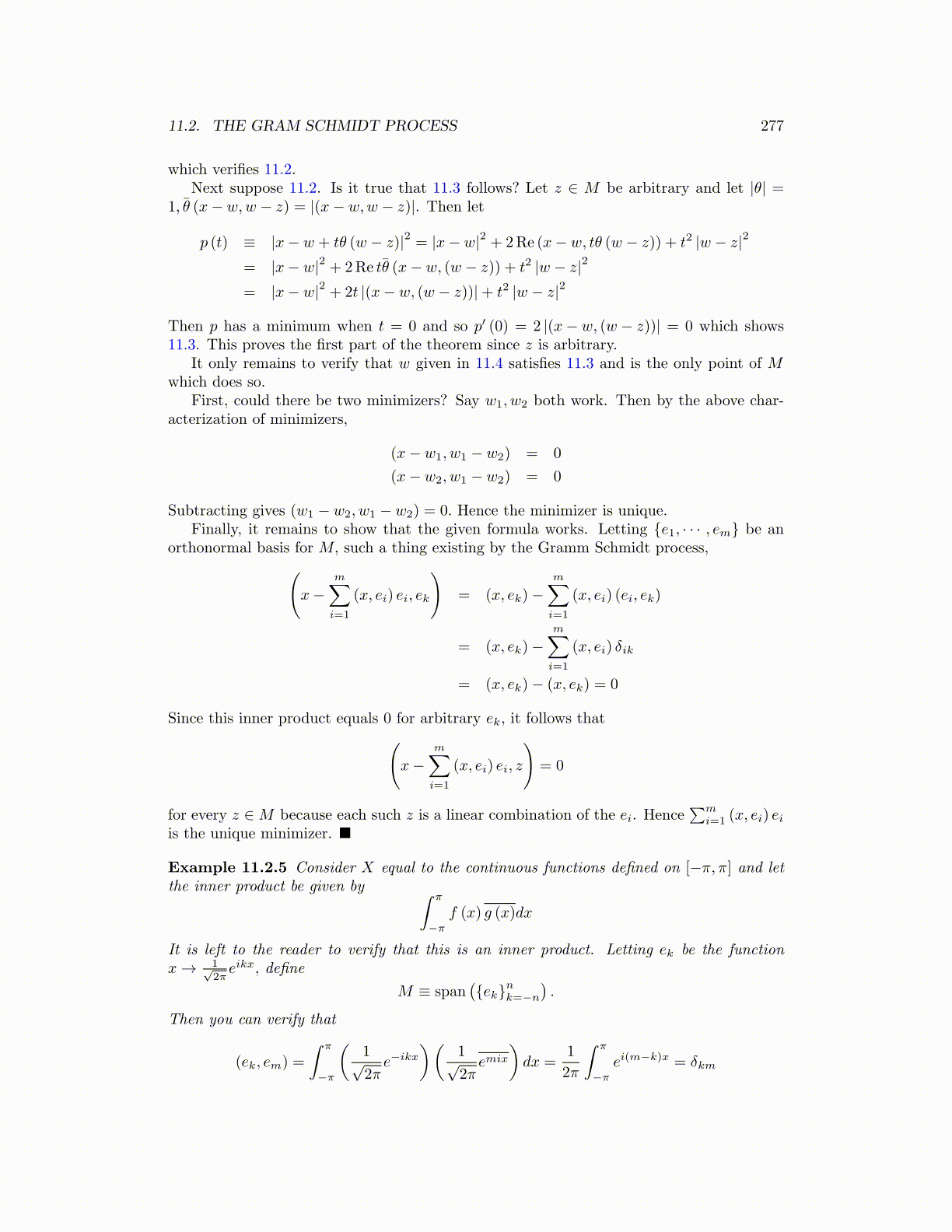
11.2. THE GRAM SCHMIDT PROCESS 277
which verifies 11.2.Next suppose 11.2. Is it true that 11.3 follows? Let z ∈ M be arbitrary and let |θ| =
1, θ̄ (x− w,w − z) = |(x− w,w − z)|. Then let
p (t) ≡ |x− w + tθ (w − z)|2 = |x− w|2 + 2Re (x− w, tθ (w − z)) + t2 |w − z|2
= |x− w|2 + 2Re tθ̄ (x− w, (w − z)) + t2 |w − z|2
= |x− w|2 + 2t |(x− w, (w − z))|+ t2 |w − z|2
Then p has a minimum when t = 0 and so p′ (0) = 2 |(x− w, (w − z))| = 0 which shows11.3. This proves the first part of the theorem since z is arbitrary.
It only remains to verify that w given in 11.4 satisfies 11.3 and is the only point of Mwhich does so.
First, could there be two minimizers? Say w1, w2 both work. Then by the above char-acterization of minimizers,
(x− w1, w1 − w2) = 0
(x− w2, w1 − w2) = 0
Subtracting gives (w1 − w2, w1 − w2) = 0. Hence the minimizer is unique.Finally, it remains to show that the given formula works. Letting {e1, · · · , em} be an
orthonormal basis for M, such a thing existing by the Gramm Schmidt process,(x−
m∑i=1
(x, ei) ei, ek
)= (x, ek)−
m∑i=1
(x, ei) (ei, ek)
= (x, ek)−m∑i=1
(x, ei) δik
= (x, ek)− (x, ek) = 0
Since this inner product equals 0 for arbitrary ek, it follows that(x−
m∑i=1
(x, ei) ei, z
)= 0
for every z ∈M because each such z is a linear combination of the ei. Hence∑m
i=1 (x, ei) eiis the unique minimizer. ■
Example 11.2.5 Consider X equal to the continuous functions defined on [−π, π] and letthe inner product be given by ∫ π
−π
f (x) g (x)dx
It is left to the reader to verify that this is an inner product. Letting ek be the functionx→ 1√
2πeikx, define
M ≡ span({ek}nk=−n
).
Then you can verify that
(ek, em) =
∫ π
−π
(1√2πe−ikx
)(1√2πemix
)dx =
1
2π
∫ π
−π
ei(m−k)x = δkm